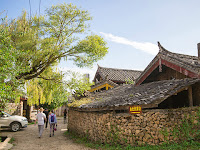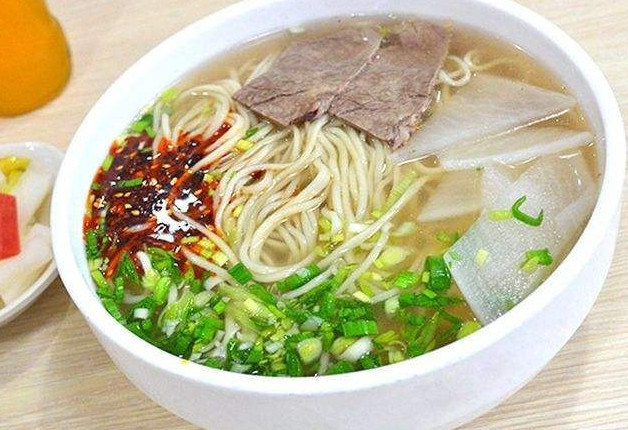Baisha Old Town - A Forgotten Gem of Yunnan
Situated south to Jade Dragon Snow Mountain, north to Dragon Spring and east to Zhishan Mountain, Baisha Old Town was the part of the world-famous Lijiang Ancient Town and the origin of chieftain Mu family. It’s also a place with a strong Naxi flavor. People regard it as the “Kingdom of Ancient Naxi Nationality.”
Some people say that Baisha is just like Lijiang in a decade ago. The fact is Baisha has its own charm. Everything here still maintained the original appearance. Along the streets, small shops are selling local handicrafts like tie-dye, antiques, and ornaments. Compared to Lijiang, Baisha is more archaic and quieter, making it a wonderful place to travel.
 |
| Baisha Old Town |
History of Baisha Old Town
Baisha Old Town was the cradle of the Mu family regime and the capital of Naxi nationality. As early as in Tang Dynasty (618-907), the ancestors of Mu family (Lijiang King back then) built Basha Street and Beiyue Temple. During Song and Yuan dynasties (960-1368), Basha remained the political, economic, commercial, and cultural center. In the early Ming Dynasty (1383), the Mu family moved to Dayan Town, where they built the Mufu Palace.
During the days when Mu Family ruled, the spring water from Jade Dragon Snow Mountain was introduced to Basha Old Town, nurturing locals for generations. Commerce and handicraft were very advanced in old times. Local Naxi people provided copper utensils and products for surrounding minorities. Baisha weaving and hand-made embroideries were also famous. Mu family rulers attached great importance to the Han culture. They hired a lot of Han people to cultivate mulberry, teach locals about silk making, embroidery, wood carving, Han architecture, and dyeing. The beautiful and diversified frescoes in Baisha are the best demonstration of cultural integration.
 |
| Baisha Street |
Baisha Murals
Baisha Murals are the primary embodiment of Lijiang frescoes. In the Ming Dynasty,
 |
| Baisha Murals |
Entering the Dabaoji Palace, you will find 12 murals with 167 images. They are all religious figures from Buddhism, Taoist, and Lamaism, exquisite, soft, and colorful, including Sakyamuni, Four Heavenly Kings, Lamas, and Taoist Deities. Besides the religious figures, many paintings show local people's working scene, hunting, fishing, iron forging, chopping, and weaving.
Yuhu Village
Located at the foot of the Jade Dragon Snow Mountain, Yuhu Lake is an old village still
 |
| Yuhu Village |
In 1922, an American named Locker traveled to Lijiang and found this human paradise. He lived here for 27 years and brought the enigmatic Naxi culture to the western world. It was because of Locker that Lijiang became known to the world, while the place he lived remained pristine and pure as usual. You can find his residence here. Same as other local houses, Locker’s old
 |
| Yuhu Village Alley |
Yuhu Village was one of the birthplaces of the Tu family of Naxi nationality. The earliest people in Yuhu Village used to breed deer for Naxi King. Therefore, there is a deer farm not far from the village. Locals are also good at raising horses. It’s common to see people riding horses in the narrow alley.
Dabaoji Palace & Liuli Temple
Dabaoji Palace and Liuli Temple are located in Baisha Town. The Liuli Temple is sitting in the west and facing the east. It’s a building with a double-eave resting hill roof. On
 |
| Dabaoji Palace |
Fuguo Temple
Built in 1601, Fuguo Temple was the private temple of family Mu, the chieftain of Naxi people. Mu family invited many Chinese Mahayana monks to practice at the temple,
 |
| Fugong Temple |
 |
| Wufeng Pavilion |
FAQ:
Where is Baisha Old Town?
Baisha Old Town is located at the foot of Jade Dragon Snow Mountain, 10 kilometers north of Lijiang Old Town with Dragon Spring to the south and Zhishan Mountain to the west.
How to get to Baisha Old Town?
If you travel with us, we will drive there from Lijiang. If you are an independent traveler, bus No.6 (get off at Basha Road) or a taxi (costs you 40 CNY) will take you there.
When is the best time to visit Baisha Old Town?
The best time to visit Basha Old Town is from April to October when the weather is pleasant, and the scenery is charming.
Recommended Itinerary:
8-day Yunnan Classic Tour to Kunming, Dali, Lijiang and Shangri-la


Comments
Post a Comment